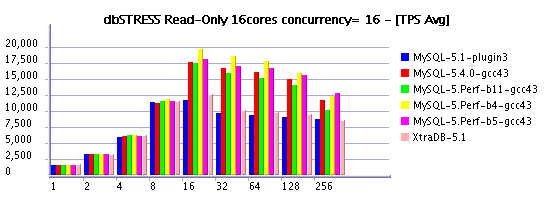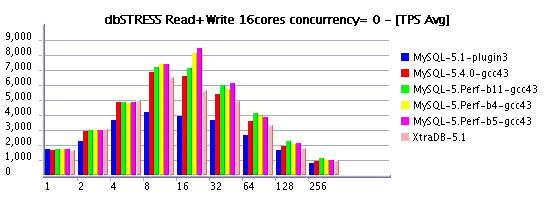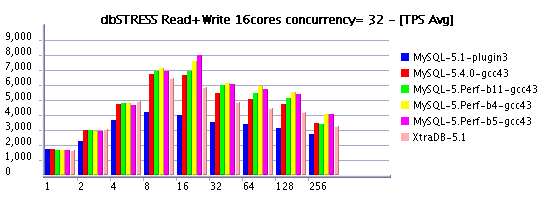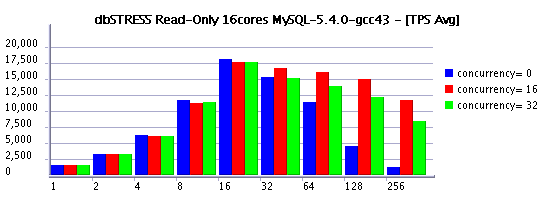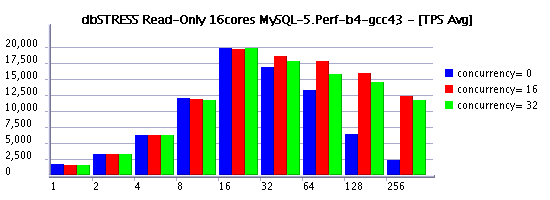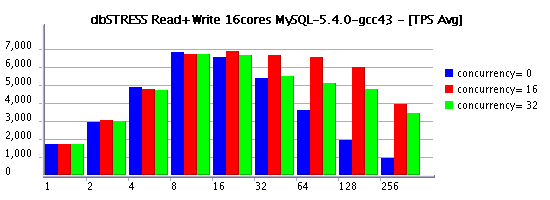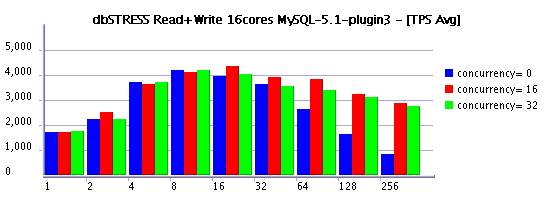| Read-Only Workload @16cores AMD |
-
Concurrency = 0
Concurrency = 16
Concurrency = 32
| Read+Write Workload @16cores AMD |
-
Concurrency = 0
Concurrency = 16
Concurrency = 32
| InnoDB thread concurrency impact @16cores AMD |
-
Read-Only: MySQL 5.4
Read-Only: XtraDB-5
Read-Only: InnoDB plugin-1.0.3
Read-Only: MySQL 5.Perf build4
Read+Write: MySQL 5.4
Read+Write: XtraDB-5
Read+Write: InnoDB plugin-1.0.3
Read+Write: MySQL 5.Perf build4

